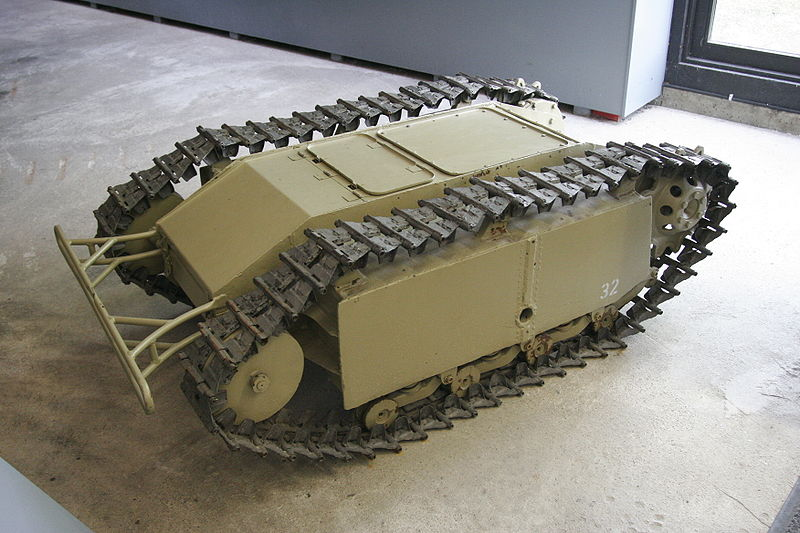A Brief History of Military Robots
The idea of an independent robotic killer that autonomously goes after enemies has long been in the realm of science fiction. Fortunately, such drone killers are currently outlawed by the laws of war developed by the Geneva Conventions. So, the chances of scenarios, like in the Terminator movies, are less likely to become reality.
However, radio-controlled drones were used going back all the way to World War I. Both the French and American militaries developed small, tank-like, tracked disposable drones that could deliver explosive charges of a few tens of kilograms.
Similar small-tank-like drones became more popular during World War II. The Germans developed the concept further with drones that delivered explosive charges up to 100 kilograms. These were quite effective at taking out tanks and demolishing buildings. The Russians developed similar drones not only equipped with explosives, but with flame throwers too.

Unmanned aerial vehicles (UAVs) were also used during World War I. They were launched from catapults and then flown via remote control. Sometimes loaded with explosives, they certainly caused damage to troops and equipment.
In World War II, both the US and the British developed UAVs that were used by fighter pilots and B-17 crews for target practice. During the Vietnam War, US troops used UAVs for aerial reconnaissance and as decoys.

Throughout the Cold War between the US and Russia, the US Defense Advanced Research Projects Agency (DARPA) developed ever more capable ground-based drones equipped with mortars, rifles, cameras, and navigation systems. Surprisingly, against the Geneva Conventions, some were allegedly fully autonomous.
Today’s Military Robot Makers
As we have all seen in the media, UAVs have become ubiquitous in modern warfare. They’re being used with devastating impact in the Ukraine War right now. Ukraine has “Raptor” and “Jump” UAVs that it regularly uses in the hundreds for surveillance and reconnaissance of Russian Military targets. It has also been known to rig these with small explosives to attack Russian targets.
These UAVs are made by General Atomics (privately held) and AeroVironment (NASDAQ: AVAV), among others. The Russian Military has also used them to attack Ukrainian targets. The origin of these UVAs is believed to be from companies in Iran.

Ground-based military drones have also continued to advance along with UAVs. The majority are small, tank-like platforms with multiple robotic arms mounted to their top surfaces. These robotic arms are able to hold cameras for reconnaissance or hold weapons for attacking.
Massachusetts based iRobot (NASDAQ: IRBT) under its latest spin-off, Endeavour Robotics, produces for the US military a series of robots known as PackBots. They incorporate multiple tank-treads to allow the PackBot to climb steep surfaces.
They were used in both Iraq and Afghanistan for reconnaissance, diffusing bombs and to search through wreckage debris. Versions of PackBots were also used to search debris left over from World Trade Center collapses.
Major military contractor BAE Systems (OTC: BAESY) is currently developing its Black Knight semi-autonomous tank. Weighing 13 tons, the Black Knight is pretty much a tank with similar weapons, only it is operated from a remote-control station inside a separate armored vehicle by trained personnel.
It’s considered semi-autonomous in that it can recognize obstacles and drive around them or react accordingly. BAE engineers are working to improve its GPS navigation, but it’s believed to be close to deployment.

Finally, having a humanoid robot that can behave in much the same way as a human soldier in terms of intelligence, but perhaps have higher strength and endurance, may be every military general’s dream.
Well, such robots are currently under development at Boston Dynamics (currently owned by Hyundai) in Waltham, Massachusetts. Its Atlas robot is spooky-similar to something you might find in a science fiction movie. It has the ability to walk, run, and to basically do gymnastics the same way a very fit human might be able to do.
You can imagine combining Atlas with some of the best artificial intelligence capabilities coming out of a place like OpenAI and seeing that it may not be too long until generals’ dreams come true!

The Military Robotics MegaTrend
Robotics has been used in military applications for over a century. The fact that they were developed before the Silicon Age is surprising, but it goes to show the duration of interest in automated technology to de-risk the battlefield.
Given the importance of robotics in warfare, the world’s militaries are willing to spend vast sums of money on robotics. In 2022, global militaries spent over $13 billion, and this number is expected to grow at a rate approaching 8% CAGR for at least the next decade and reach nearly $29 billion by 2032.
By investing in the companies mentioned above (at least those that are public), you have the potential to get in on the military robotics MegaTrend and profit from the growth of this market.
Take Advantage of Proffe’s Options Strategy by Never Missing an Options Package!
Are you seeking a secure, uncomplicated, and highly profitable options strategy?
If that’s the case, our Options Package is exactly what you need! With Proffe’s Options Packages, you don’t need to struggle with intricate strategies – we provide you with handpicked contracts for buying and selling over a 24-month timeframe. You’ll buy when we do, and we’ll alert you when it’s time to sell. It’s truly that simple.
Interested in knowing when our next package launches? Click the button below to sign up for our mailing list!

